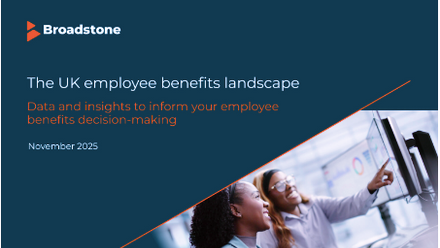Expert view: Workplace wellbeing made easy
Among the sheer number and variety of exhibitors and topical breakout speaker sessions at the recent REBA Wellbeing Congress, there was one theme that stood out. Employers have a breathtaking array of wellbeing apps and services to choose from, but some might be struggling to select what’s best for their organisation.
Some presenters, including Harry Bliss, CEO & co-founder for Champion Health; Ryan Hopkins, chief impact officer JAAQ; and Gethin Nadin, psychologist and chief innovation officer at Benefex, even questioned whether employers might have got workplace wellbeing wrong. They asked whether employers were wasting their time in the face of higher spending and a mounting tech stack but little evidence of improvements in the wellbeing of their staff.
Skyrocketing disability benefit
To give some context: the number of people economically inactive because of long-term sickness has risen to over 2.5 million people, an increase of over 400,000 since the start of the pandemic. According to the Office for Budget Responsibility (OBR), state spending on disability benefits is set to skyrocket by 49% from £39.1 billion in the UK in 2023-24 to £58.1 billion in 2028-29.
Although a concern for any new administration, employers have a massive role to play in helping to retain people, rather than letting them slip into economic inactivity because of long-term sickness.
Wouldn’t it be great if wellbeing was made easier? Oh wait, it has been.
Group risk providers dug their heels in on this a long time ago. They moved from just paying claims (on death, long-term sickness absence and critical illness diagnosis) to making active early interventions, to providing embedded health and wellbeing support services aimed at reducing sickness absence and encouraging better health behaviours.
Such embedded services can include access to an employee assistance programme (EAP), a second medical opinion, nurse-led support, vocational rehabilitation, fast-tracked counselling and physiotherapy, an online GP, health apps, HR and line manager support and more. Support can even include access to discount vouchers, financial education and wellbeing tools, a debt consolidation service or a pay advance scheme to support financial wellbeing.
Robust evaluation
Each embedded service brought to employers in this way has undergone robust evaluation. The insurer has effectively done the hard lifting to ensure they’ve selected services that are valuable, and deliver results.
At the REBA Wellbeing Congress we heard exactly how effective these services have been. Liz Walker, chief operating officer at Unum UK spoke with Cleo Howie, senior manager, health & wellbeing at AWE, about how these services helped to redefine the organisation’s recipe for workplace productivity. There was, however, no mention of the insurance sitting behind these health and wellbeing services, demonstrating how well AWE has harnessed the extras within its insurance purchase as part of its wellbeing programme, HR policies and protocols and supportive kitbag.
Take a standback view
Employers looking to make robust choices for their wellbeing support programme could find more help than they realise within their existing benefits package, particularly group risk benefits. It’s always worth standing back and looking at what comes within each employee benefit purchase. This way employee benefits can be linked up and wellbeing teams can drive maximum value for the wellbeing programme.







